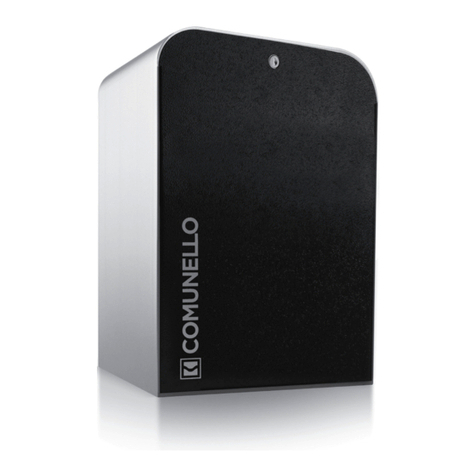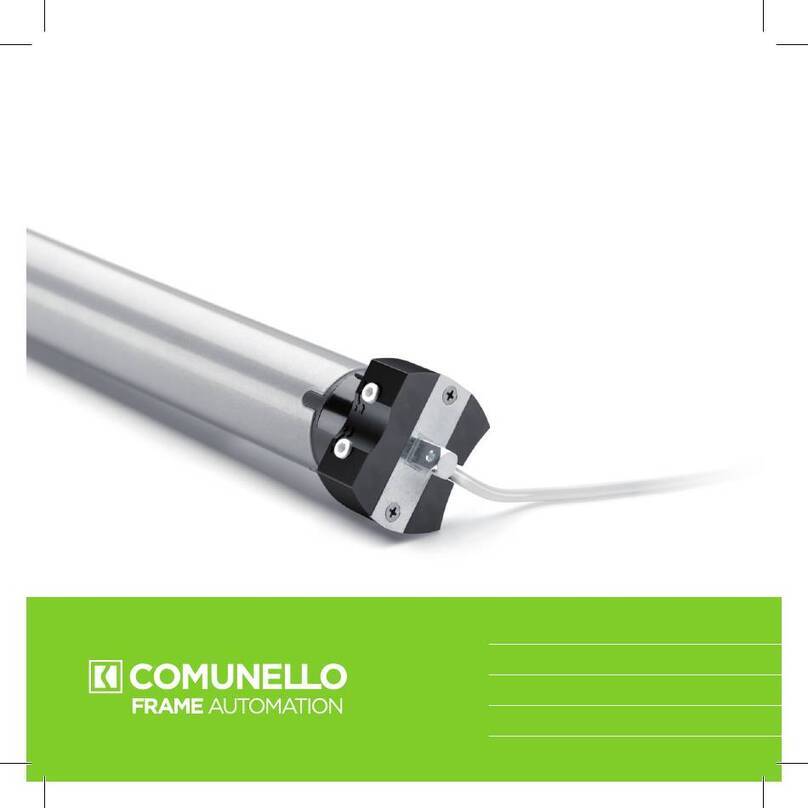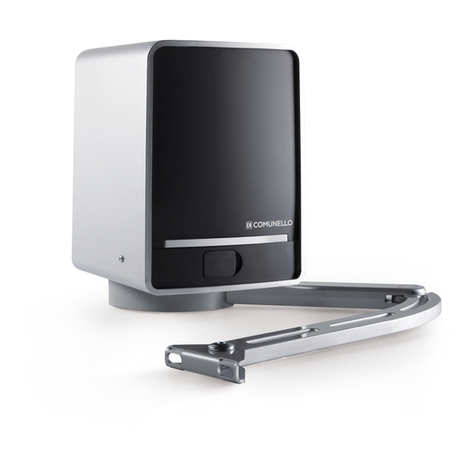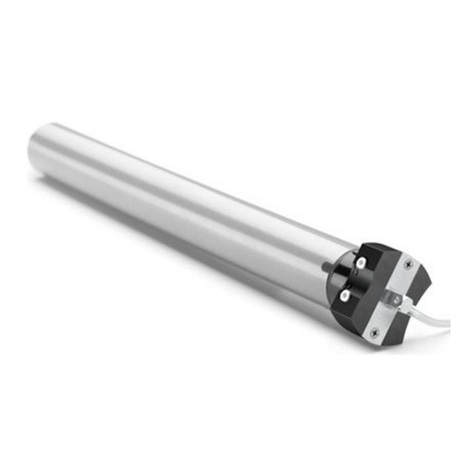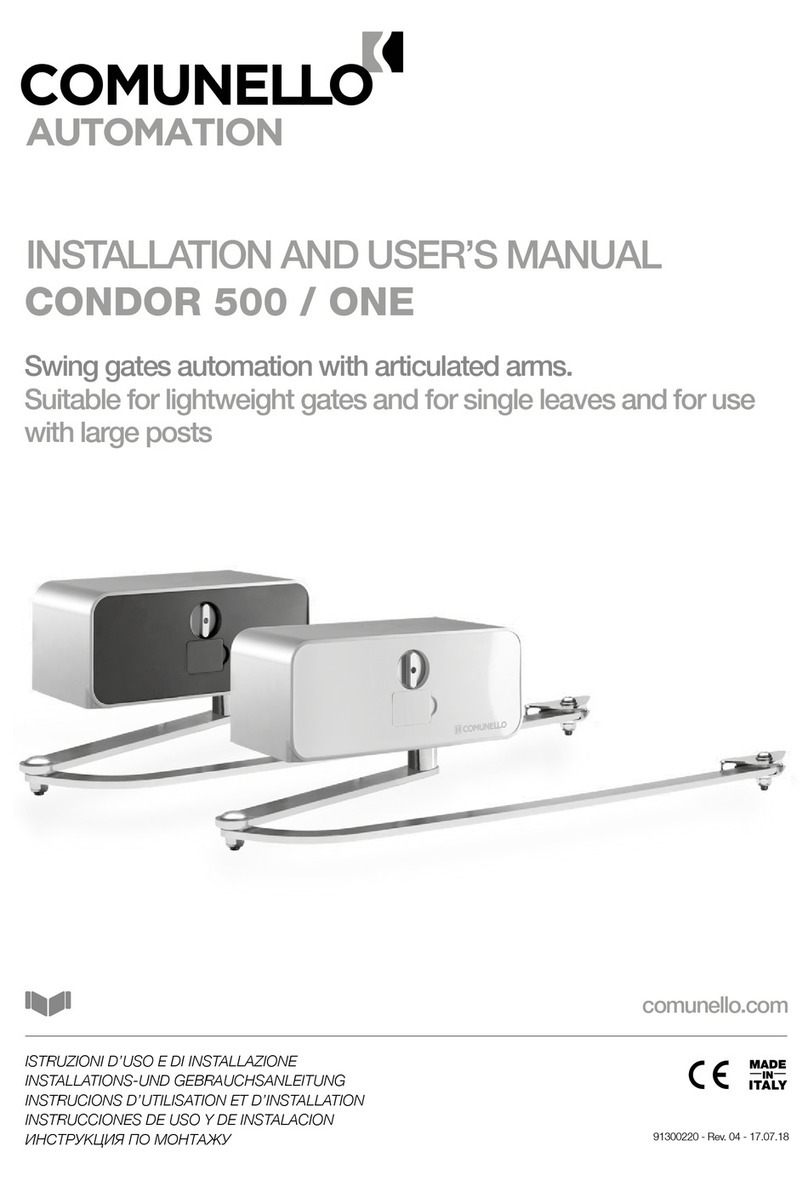
10
COMUNELLO ®Copyright 2013 - All right reserved
Fratelli Comunello S.p.A.
Azienda con Sistema Gestione Qualità certicato
UNI EN ISO 9001:2008.
(Certicato n° 50 100 11235 Rev. 01)
DICHIARAZIONE DI CONFORMITÁ CE
Il sottoscritto, sig. COMUNELLO LUCA rappresentante il seguente costruttore
F.lli COMUNELLO spa
Via Cassola 64, 36027 Rosà (VI) Italy
DICHIARA che l’apparecchiatura descritta in appresso:
Descrizione Automazione elettromeccanica per cancelli a battente con braccetti articolati (Grandi pilastri)
Modello CONDOR 500 / ONE
è conforme alle disposizioni legislative che traspongono le seguenti direttive:
• direttiva 2004/108 CE (Direttiva EMC)
• direttiva 2006/42/CE (Direttiva Macchine)
e che sono state applicate tutte le norme e/o speciche tecniche di seguito indicate
EN61000-6-2 + EN61000-6-3
EN62233:2008
EN301489-1 + EN301489-3 + EN300220-2
EN60335-2-103:2003 + EN60335-1:2002
EN13241-1 + EN12445 + EN12453
ed emendamenti successivi
Ultime due cifre dell’anno in cui è afssa la marcatura CE 14
Rosà (VI) – Italia
01-09-2014
Inoltre dichiara che non è consentito mettere in servizio il macchinario no a che la macchina in cui sarà incorporata o di cui diverrà
componente sia stata identicata e ne sia stata dichiarata la conformità alle condizioni della Direttiva 2006/42/CE e alla legislazione
nazionale che la traspone.
Dr. LUCA COMUNELLO
Legale rappresentante della FRATELLI COMUNELLO s.p.a.
CONDOR 500
ISTRUZIONI D’USO E DI INSTALLAZIONE







